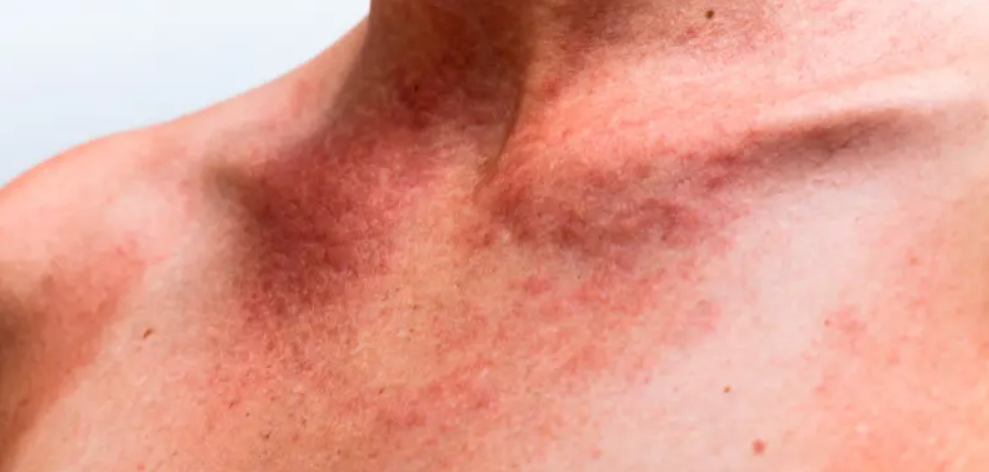Histamine intolerance indicates a high quantity of histamine in the body. It could be due to the body’s inability to break it down, or another underlying cause.
Unfortunately, elevated histamine levels can have a harmful impact on many different systems in the body.
Histamine intolerance is not a symptom of sensitivity, but rather of an excess of histamine.
This molecule is important for a variety of processes, including activating the release of stomach acid, which is required for healthy digestion, conveying instructions to the brain, and occurring in response to an allergy or injury by the immune system.
What Are the Major Symptoms of Histamine Intolerance?
Because histamine receptors are found throughout the body, intolerance can affect a variety of systems. One study from 2019 discovered that participants experienced an average of 11 indicators, with 96.8% experiencing more than three signs.
The symptoms of this intolerance are non-specific. This is because they can also appear as symptoms of another health issue, impeding the diagnostic process.
Here are the 16 possible symptoms of histamine intolerance.
- Flushing & redness
- Itchiness
- Nasal congestion
- Irregular menstrual cycles
- Anxiety & mood problems
- ADHD
- Hives
- Edema
- Diarrhea
- Abdominal pain
- Constipation
- Postprandial abdomeninal distension
- Hypotension
- Headaches/migraines
- Dizziness
- Tachycardia
Treatment of Histamine Intolerance by Addressing the Root Causes
When treating histamine intolerance, it is critical to address the underlying cause. This can be accomplished by focussing greater attention on the source of the elevated histamine levels.
Let’s look into the primary root causes:
*Gut-related
Some gut bacteria create histamine, and if they overgrow, the histamine burden may increase. To manufacture enough DAO enzyme to break down histamine in the gut, you must first restore your gut health.
Morganella, klebsiella, klebsiella pneumoniae, pseudomonas, pseudomonas aeruginosa, proteus, citrobacter freundii, and proteus mirabilis are gut bacteria that may be producing excessive histamine release.
Support your gut health to lower histamine-producing bacteria numbers. A good place to start would be to avoid constipation, supplement the gut with prebiotics and probiotics, and support the health of the gut-regulating organs, such as the liver and gallbladder.
*Liver and gallbladder linked.
The liver and gallbladder are two critical organs that contribute to the optimal health of the gut. The liver-gallbladder axis is known to modulate the gut flora throughout time.
This axis regulates the digestive processes in several ways. When the liver is sick, the intestinal environment deteriorates, increasing the likelihood of histamine-producing bacteria overgrowth.
This is why it’s critical to care for your liver and gallbladder, as well as your gut health. The first step is to determine whether there is any toxicity.
This can be accomplished by performing blood tests and mineral testing to determine copper and iron levels. Second, you should increase your fibre intake to promote detoxification; third, you should consume only premium-quality animal protein to ensure optimal liver detox; fourth, don’t overdo the consumption of antibiotics and pain meds; fifth, it’s recommended to lower the intake of alcoholic drinks; and sixth, try to lower the intake of plants with a higher plant toxin load, such as tomatoes, hot peppers, bell peppers, eggplants, etc., as well as high oxalate foods like choco.
*Undermethylation & histamine
Histamine can accumulate in excess due to methylation issues that prevent it from being broken down effectively.
Knowing more about your methylation status is therefore essential. Whole blood histamine and homocysteine levels can be tested in a laboratory.
This will allow you to establish whether you are a typical methylator, an under methylator, or an over methylator. Undermethylators typically have greater levels of histamine and may benefit from taking B vitamins and including items from the methyl group in their diet.
* Overstimulated release of histamine
Histamine intolerance can occur when the body overproduces it in response to specific stimuli.
For example, a food allergy, an environmental pollutant such as pollen or mould, an injury, or another threat perceived by your body.
After reading this text you can also read about: Pour Salt Down Your Shower Drain And See Why Plumbers Recommend It!



